The kimono is a traditional Japanese garment that has been worn for centuries. While not as commonly worn today, the kimono remains an important cultural symbol of Japan.
Here I am to explore the history and cultural significance of the kimono, and why people continue to wear this iconic garment.
Table of Contents
Why do People wear kimonos?
People wear kimonos for cultural traditions, formal events, ceremonies, and fashion. They are admired for their elegance and unique designs.
How Has the Kimono Changed Over Time?
The kimono first emerged during Japan’s Heian period (794-1185 AD) and was worn by both men and women. Early kimonos were inspired by clothing from China and Korea and were designed with straight seams and loose sleeves.
Over the centuries, the kimono evolved with changes in fashion and textile technology. In the 16th century, the kosode, a basic kimono with small sleeves, became popular. In the Edo period (1603-1868), decorative techniques like embroidery and dyeing advanced, allowing kimonos to be made in vivid colors and patterns.

The shape of the kimono also changed, with differences emerging between kimonos for men and women. Women’s kimonos adopted long, flowing sleeves, while men’s kimono sleeves became shorter. Collars became taller, and the obi or sash around the waist grew wider and more ornate.
Today the basic shape and parts of the kimono are still similar to those that developed in the late Edo period. However, most Japanese people wear the kimono only for special events, and no longer as everyday wear.
What Color Are Kimonos in Different Seasons?
The color and patterns used in kimonos often reflect the season they are worn:
- Spring – Bright colors like pink, red, blue and green are common in spring kimonos, evoking the blooming flowers. Abstract floral patterns are also widely used.
- Summer – Cool and light colors like purple, blue, gray and mint green are popular for summer. Motifs often include cool images like water or cherry blossoms.
- Autumn – Warm colors like red, orange and brown reflect the autumn leaves. Images of autumn plants, flowers and animals are common patterns.
- Winter – Darker muted colors like deep purple, navy and forest green are worn in winter. Motifs may include snowflakes, pine trees or cranes.
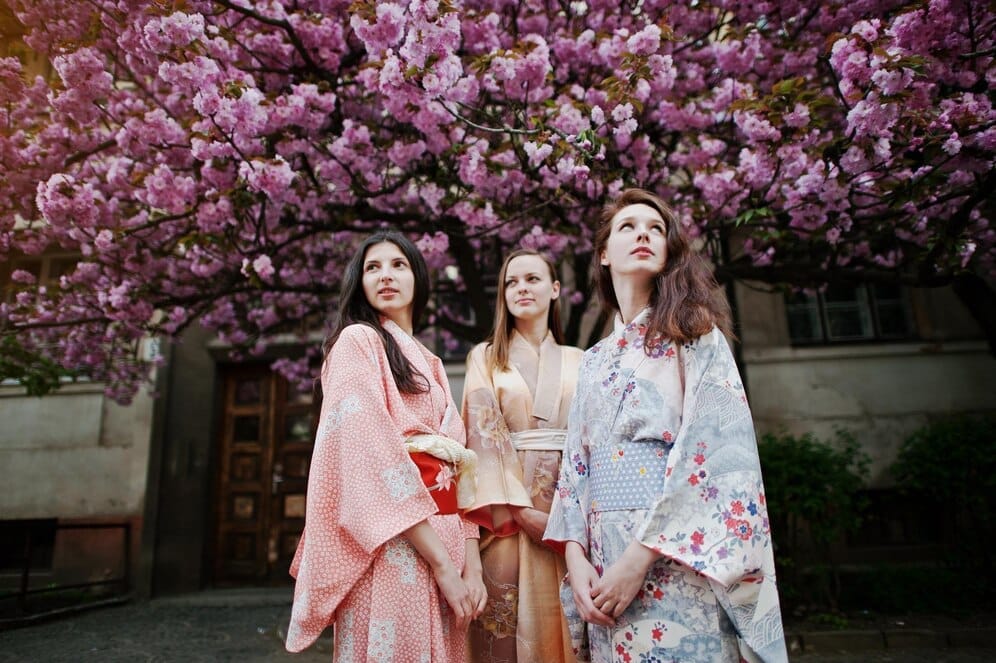
While these seasonal norms exist, there is great variety when it comes to kimono colors and patterns. Some kimonos are also made specifically for festivals and do not follow seasonal color conventions.
Why are Japanese Kimonos So Expensive?
There are several reasons why traditional handmade Japanese kimonos come with a high price tag:
- Materials – Silk and handmade Japanese paper are usually used, which are costly. Some lavish kimonos even use gold and silver foils and threads.
- Dyes – Plant-based dyes must be painstakingly hand-prepared to achieve the desired hues.
- Craftsmanship – Each kimono is cut and sewn entirely by hand by specialized artisans. The sewing, pattern drafting and embroidery involved require great skill and labor.
- Layers – A complete kimono outfit has multiple layers, which multiplies the amount of fabric and work required.
- Customization – Kimonos are typically tailored to the individual’s body, not mass produced, adding to the work and cost.
- Collector’s Items – Antique and vintage kimonos from prior eras are rare and highly valued by collectors.
So while cheaper mass-produced kimonos are now available, traditional high-end kimonos remain costly due to the time, materials and skill required to create them. Their price reflects their status as wearable artworks.
What is the Difference Between a Kimono and a Yukata?
While the kimono and yukata are often confused for one another, there are some key differences:
Fabric – Yukata are made from cotton, while kimonos use silk.
Pattern – Yukata patterns are more vibrant and colorful, while kimono have more formal, elegant designs.
Occasion – Kimonos are worn for formal and special events. Yukata are more casual summer garb.
Layers – Yukata requires fewer layers and accessories than a traditional kimono outfit.
Gender – Yukata are worn by both men and women. Kimonos are more gender-specific in style.
Cost – A yukata is much cheaper to produce than a high-quality handmade kimono.
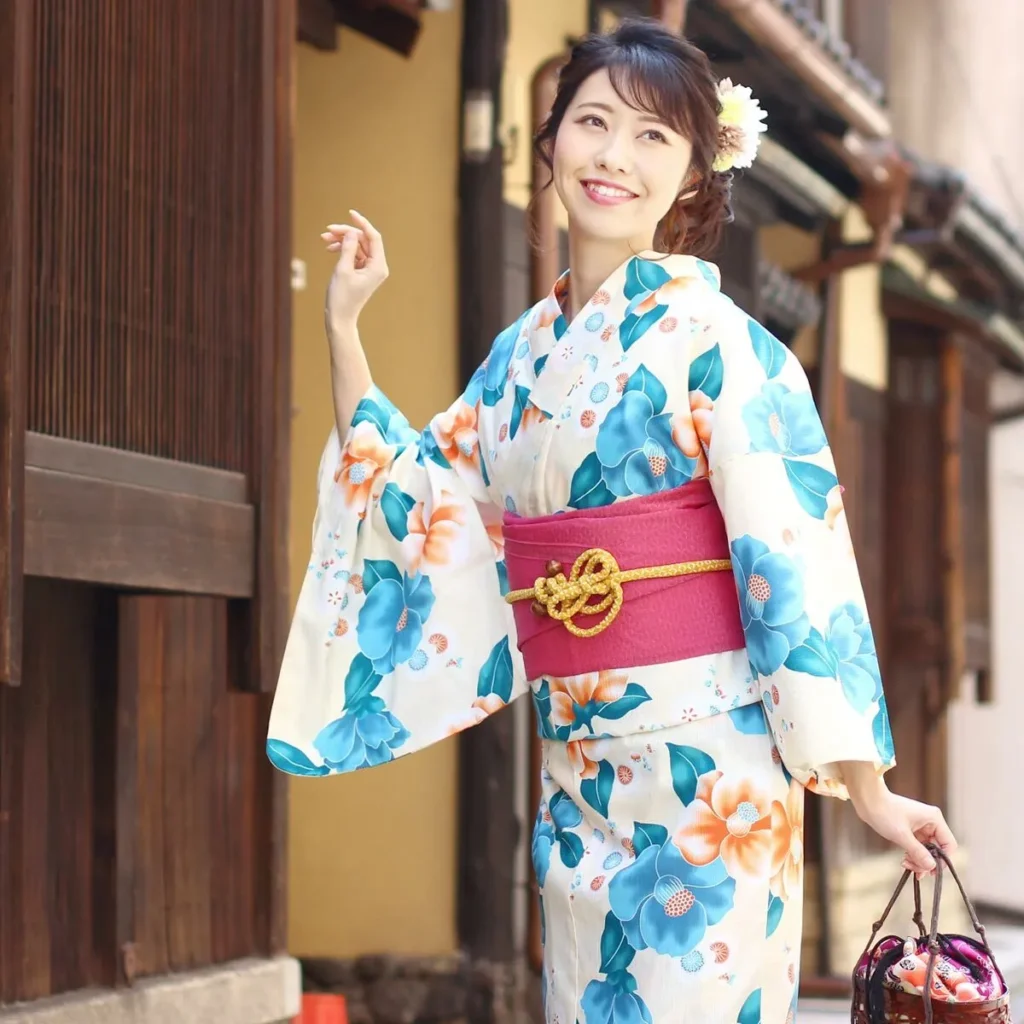
So I can say that, the yukata is a lightweight cotton summer garment, while the kimono uses finer materials for formal wear. But both represent traditional Japanese dress and culture.
Is Kimono Still Popular in Japan?
While the kimono is not everyday wear anymore in Japan, it remains an important cultural symbol and garment for special occasions.
Here are some ways the kimono is still integrated into Japanese culture today:
Formal Events – Weddings, teas, gallery exhibits and other formal events will often have guests wearing kimono.
Coming of Age Day – Many young women wear kimono for Seijin No Hi, a holiday celebrating adulthood.
Performance Arts – Kimono are still worn for traditional dance forms like kabuki, buyoh and nihon buyo.
Festivals – During celebrations like the Cherry Blossom Festival, many people opt for kimono.
Foreign Interest – Interest in J-fashion abroad has led to new appreciation for kimono craftsmanship.
Design Inspiration – Contemporary Japanese fashion designers still use kimono fabrics, silhouettes and detailing as inspiration.
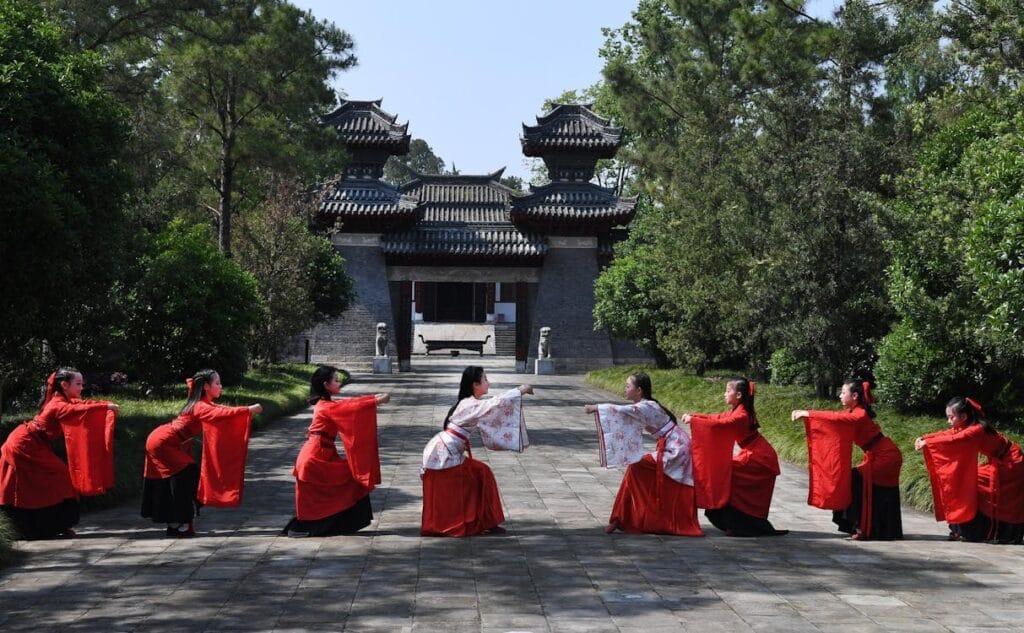
So while not daily apparel for most, the kimono remains an iconic cultural garment that links back to Japanese identity and tradition.
Can I Wear a Kimono If I’m Not Japanese?
There has been much debate on whether it’s appropriate for non-Japanese people to wear the traditional kimono. Some consider wearing it cultural appreciation, while others see it as cultural appropriation.
Here are some tips for wearing kimono respectfully:
- Seek proper instruction on how to wear kimono correctly according to traditions.
- Avoid wearing kimono as a “costume” for Halloween or theme parties. It has deeper cultural meaning.
- Purchase from Japanese artisans and craftspeople to support the trade. Avoid mass-produced fast fashion kimonos.
- Learn about the imagery, motifs and traditions depicted in the garment. Ask questions to deepen understanding.
- Be aware there are some sacred kimonos reserved for rituals not meant to be worn outside those settings.
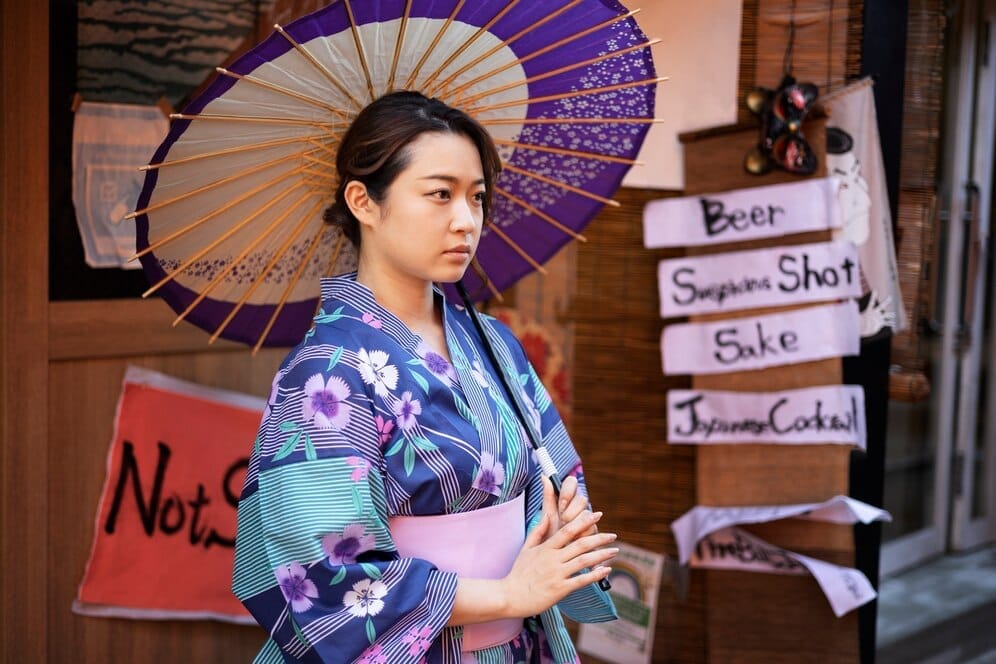
Most Japanese people are delighted to share their culture when approached with respect and desire to learn. If wearing a kimono thoughtfully, it can be a way to engage with Japanese culture and support traditional crafts.
FAQ’s:
Why did kimonos originate in Japan?
Kimonos originated in Japan due to influences from nearby countries like China and Korea where similar garments were worn. The kimono was also well-suited to Japan’s climate and lifestyle.
Are kimonos only worn by women?
Historically kimonos were worn by both men and women, though with gender-specific styling. Today they are most commonly worn by women, though some men don kimono for formal occasions.
Can you wear a kimono casually at home?
While traditionally worn only outside the home, kimono are now sometimes worn casually at home as loungewear or a hobbyist practice. But they remain primarily a garment for formal occasions.
How do you tie an obi sash?
There are many intricate ways to tie kimono obi sashes. Common methods include the drum bow, butterfly bow and knotted rope obi styles. Proper wrapping and tying of the obi requires instruction and practice.
What accessories are worn with kimonos?
Common kimono accessories include tabi socks/shoes, hand fans, hair ornaments, and functional items like tobacco cases. For colder months, haori jackets are paired with kimono.
Conclusion
The kimono has a long and storied history and remains an important cultural symbol in Japan, though it is not everyday apparel anymore.
The significance, craftsmanship and beauty behind the garment make it enduringly appealing for special occasions and those wanting to connect with tradition.
While respecting customs is key, with mindful wearing anyone can appreciate a kimono’s artistry and heritage.
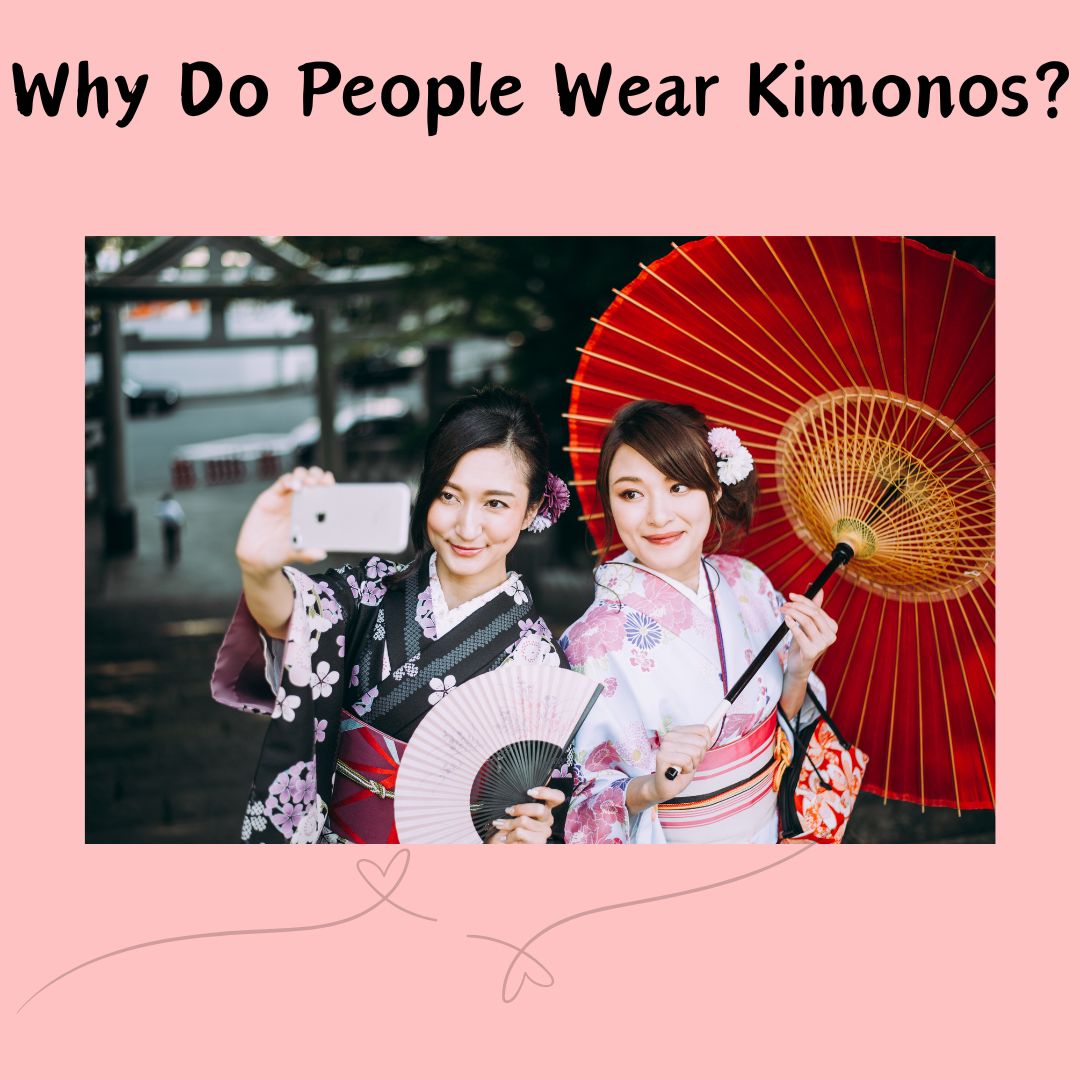







Leave a Reply